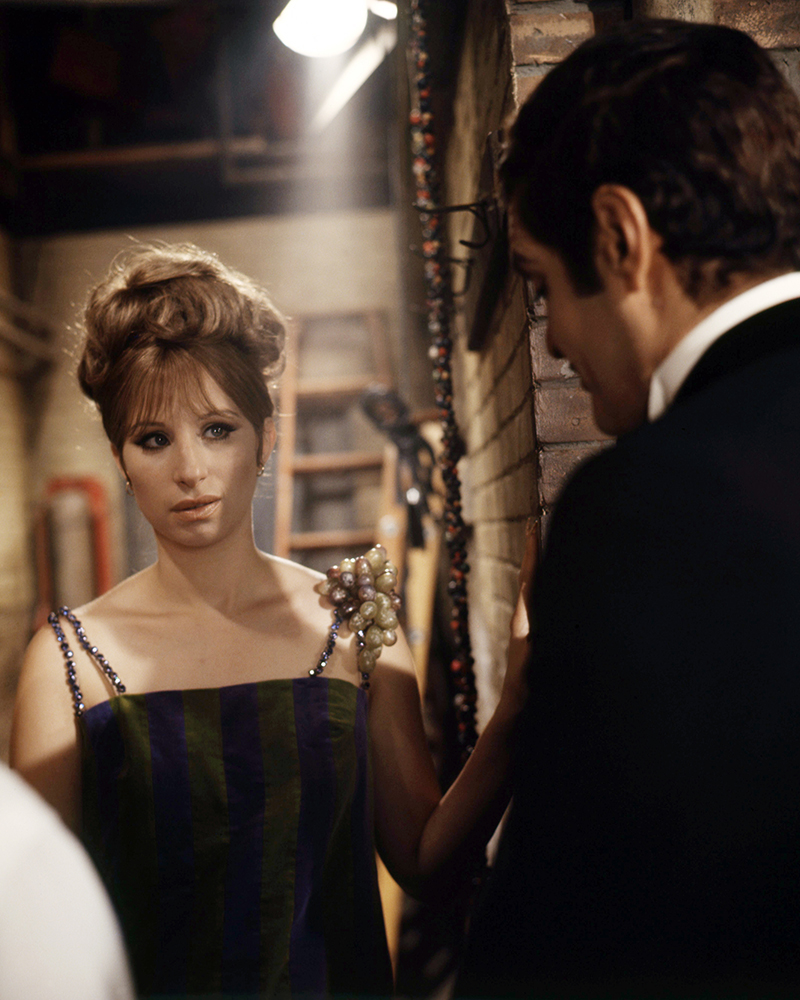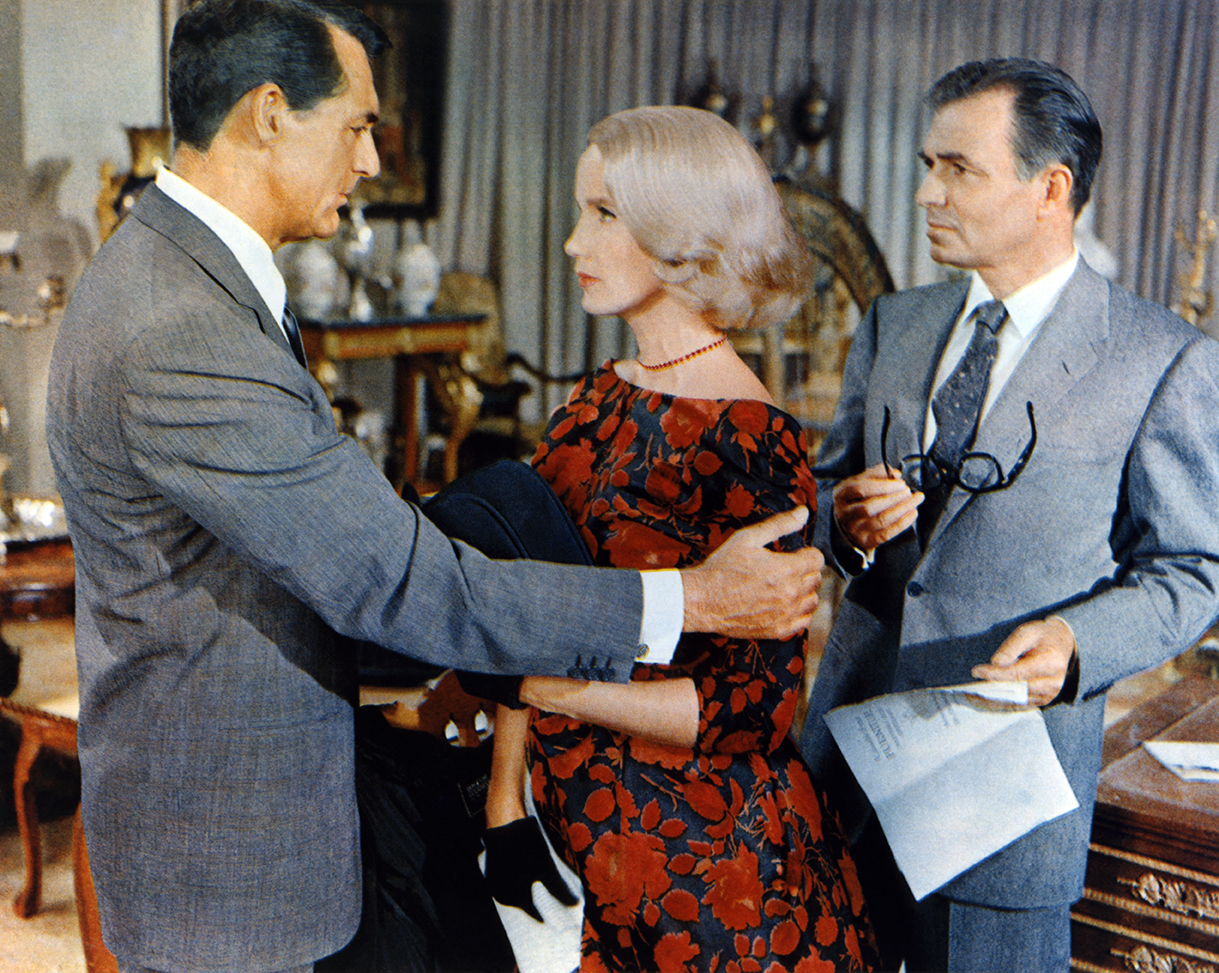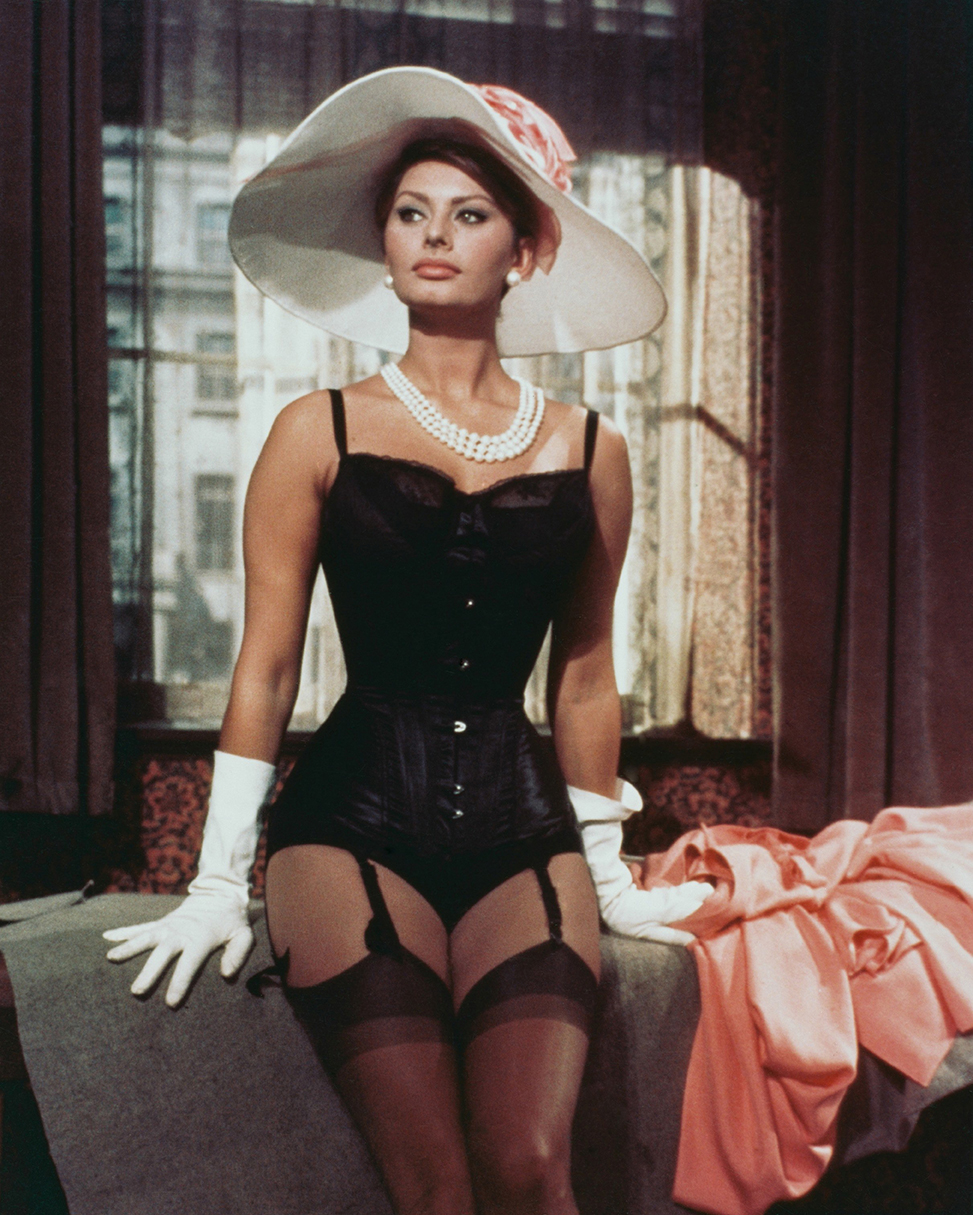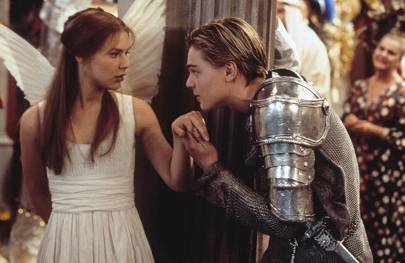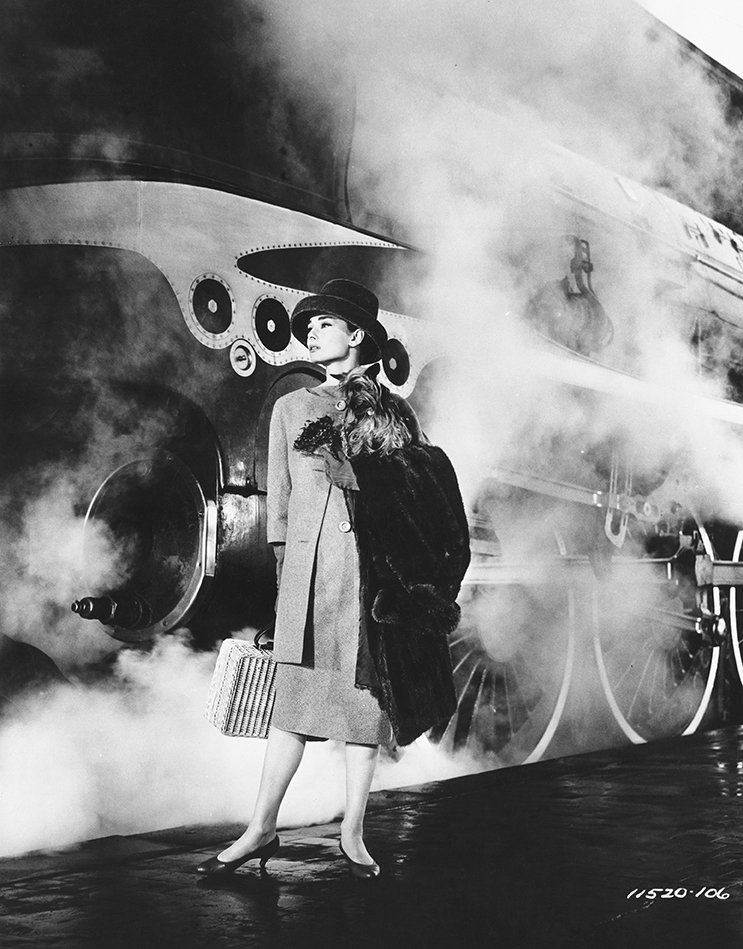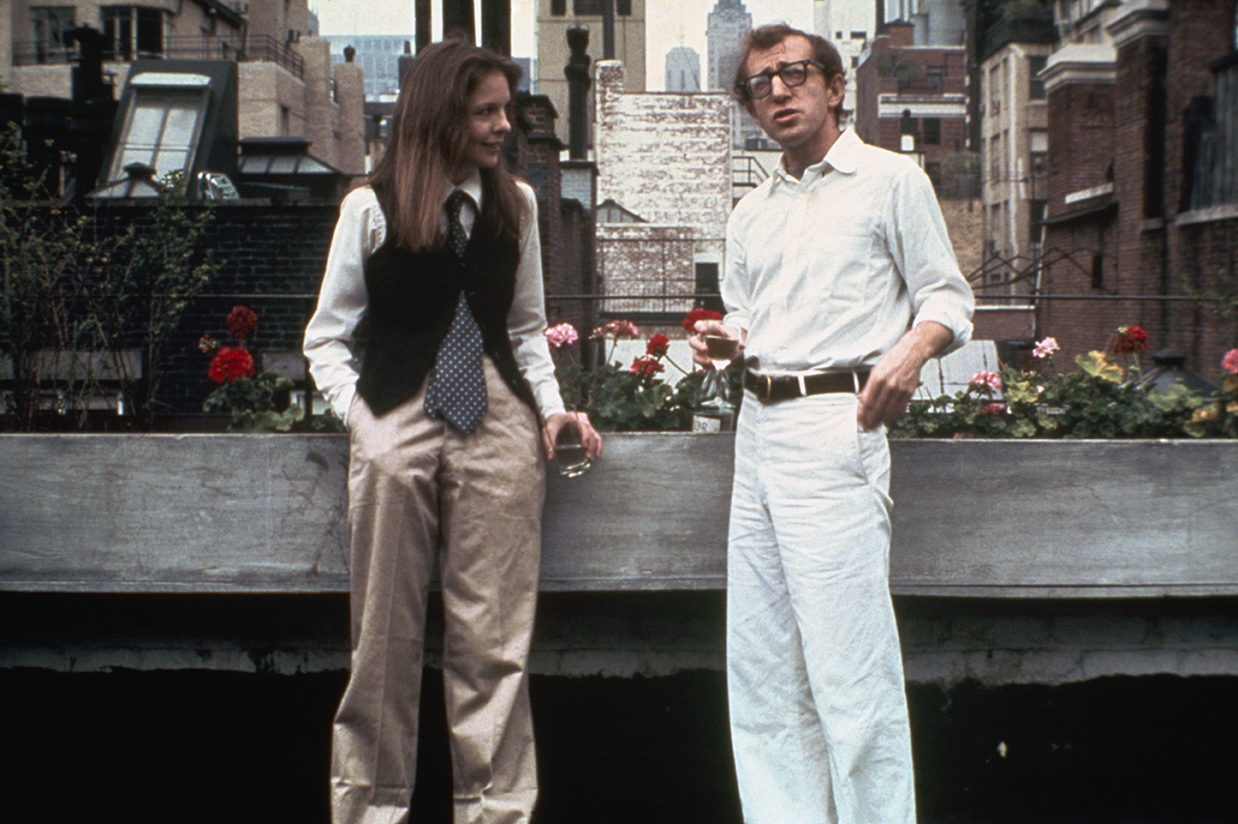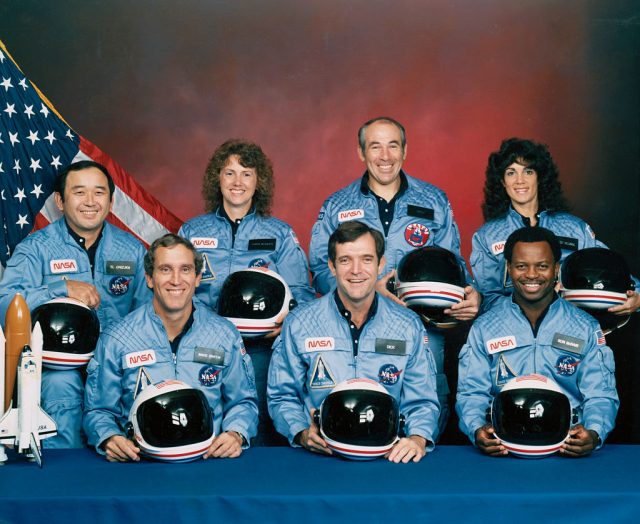How do you even begin to narrow down a list of the most stylish films ever made? Start by working your way through 31 of Vogue‘s favourites – from costume dramas known for their over-the-top, lavish wardrobes (hello, Gone with the Wind) to cult films and characters whose sartorial details are now legendary, like Annie Hall’s quirky ties or Elvira Hancock’s power suits.
In The Mood For Love (2000)
Wong Kar-wai’s 2000 story of intimacy and unrequited love is an ode to a bygone Hong Kong, bathed in a sumptuous palette of red, orange and gold. But the costumes also deserve recognition. Maggie Cheung, as the female lead, is radiant in a series of brightly coloured, clinging qipao dresses, showing that the Chinese garment hasn’t lost an inch of its charm since it was first popularised in the 1920s.
Funny Girl (1968)
Aside from being the perfect vehicle for Barbra Streisand’s vocal chops and impeccable comic timing, Funny Girl is a visual delight. Streisand, who had already starred in the stage version on Broadway and in the West End, plays the plucky Fanny Brice, a performer working her way from vaudeville to Broadway. And, of course, such a journey requires a dramatic array of costumes. To that end, costume designer Irene Sharaff went heavy on the beading, rhinestones, and fur.
What A Way To Go (1964)
If you’re still puzzled by the meaning of camp, a screening of What A Way To Go will shed some light on it. As a widow whose four husbands – Paul Newman, Robert Mitchum, Gene Kelly and Dick Van Dyke – have all met slapstick ends, Shirley MacLaine wears a series of Edith Head-designed costumes that, to quote The Hollywood Reporter’s original review, “tread that delicate line between burlesque and reality”. Prepare for orange feathers, pink fur and diamanté body-con, among other outrageous looks.
Carol (2015)
A love story between a Manhattan department store clerk and a soon-to-be-divorced socialite in the early 1950s was bound to be a stylish affair, but the costumes by three-time Oscar-winner Sandy Powell brought this film to another level. Powell dressed the titular Carol (Cate Blanchett) in looks that reflected the upper-class trends of the time, drawing inspiration from the work of street photographers like Ruth Orkin, Vivian Maier and Saul Leiter.
North by Northwest (1959)
In this Hitchcock thriller, the eternally dapper Cary Grant stars as Roger Thornhill, an ad man forced to go on the run when foreign spies mistake him for a government agent. As Eve Kendall, the mysterious woman with whom he gets involved, Eva Marie Saint wears a series of elegant looks – all bought directly off the rack at Bergdorf Goodman.
Barbarella (1968)
Long before she was being arrested while standing up for her beliefs, Jane Fonda starred as Barbarella, a government agent who travels from planet to planet in go-go boots and metallic bodysuits inspired by the designs of Paco Rabanne. While not entirely practical, the costumes in this sci-fi cult classic hold up as perennial fancy dress outfit inspiration.
Blow Up (1966)
Michelangelo Antonioni’s Blow Up is required viewing for anyone obsessed with Swinging London. The film centres around an in-demand fashion photographer whose life changes when he unknowingly photographs a murder (or does he?) in the park. With numerous photo shoots and party scenes, as well as appearances from Jane Birkin and Veruschka, the Palme D’Or winner captures the combination of seediness and glamour the decade is remembered for.
Last Year In Marienbad (1961)
Photo: Evening Standard/Hulton Archive via Getty Images
Last Year In Marienbad is today regarded as a master work of French New Wave cinema. A non-linear plot follows a man and a woman who may or may not have met the year before. Director Alain Resnais enlisted Coco Chanel to design the costumes for the female lead, and requested one special dress that would recall the film stars of the 1920s – without looking dated. Chanel obliged, and the little black mousseline dress she designed was so popular that it became known as the “la robe à la Marienbad” (the Marienbad dress).
Mahogany (1975)
Photo: Motown Productions/Nikor Productions/Sunset Boulevard/Corbis via Getty Images
Mahogany is a rags-to-riches story for the ages. Produced by Motown Records, it stars Diana Ross (fresh off the back of her turn in the Oscar-nominated Lady Sings the Blues) as Tracy Chambers, a struggling design student who becomes a renowned fashion designer. Reflecting the decade’s excess and her real-world superstardom, Ross is a picture of extremes: voluminous hair and mile-long lashes; big feathers and bigger furs.
The Great Gatsby (2013)
The 1920s live in the public imagination as a time of unchecked decadence, so Baz Luhrmann was the perfect director to bring The Great Gatsby, one of the decade’s defining novels, to the big screen. To bring his sumptuous vision to life, Luhrmann enlisted Miuccia Prada to collaborate with costume designer Catherine Martin on a whopping 40 costumes. While Prada insisted “it was not about glamour for me”, her designs epitomise opulence.
Clueless (1995)
In 1995, the grunge movement was in full swing, with baggy flannel shirts and baggier jeans dominating the streets. But would the designer label-loving girls in Amy Heckerling’s Clueless wear them? As if! The cast’s elevated school girl look (plaid skirt sets, over-the-knee socks and Mary Janes) went on to become a classic.
A Single Man (2009)
Tom Ford’s directorial debut proved that his aesthetic sixth sense applies far beyond the runway. Adapted from the 1964 Christopher Isherwood novel of the same name, A Single Man follows a day in the life of George Falconer, a depressed, gay professor living in Southern California in the 1960s. Everything from Falconer’s perfectly tailored suits to co-star Julianne Moore’s incredible hair and makeup are pitch-perfect for the period.
A Bigger Splash (2015)
Before venturing to northern Italy for Call Me By Your Name in 2017, Luca Guadagnino travelled to the Italian island of Pantelleria for 2015’s A Bigger Splash. Tilda Swinton, who stars alongside Ralph Fiennes and Dakota Johnson in the film, wears a number of breezy Dior outfits designed by Raf Simons. But don’t expect anything too deliberate: “In the beginning, we had a colour palette and beautifully controlled costumes, but we decided to throw all of that away and have the pieces look like something thrown into a suitcase,” costume designer Giulia Piersanti told Vogue in 2016.
Kids (1995)
Photo: Still from Kids (Shining Excalibur/Independent/Kobal)
What the costumes in Larry Clark’s bleak Kids – which tackled serious issues like sex and substance abuse among teenagers – lacked in theatrical flair, they made up for in realism, reflecting what kids were actually wearing during the decade. Many of the looks on screen, from hair barrettes to skatewear to logo tees, have made their way back into wardrobes amid the revival of all things ’90s.
The Millionairess (1960)
Photo: Silver Screen Collection/Hulton Archive via Getty Images
What does the richest woman in the world wear while on the hunt for love? French couture, of course. Or at least that’s the impression given by The Millionairess, in which Sophia Loren wore a wardrobe designed by Pierre Balmain, heavy on figure-enhancing gowns and fantastical hats.
American Gigolo (1980)
The unexpected success of American Gigolo, in which Richard Gere exclusively wore relaxed Giorgio Armani suits, ushered in a new era of tailoring that would continue for much of the decade. This was due in part to savvy timing from Armani – the film was released around the same time as he launched his international ready-to-wear line.
Maîtresse (1975)
Photo: Still from Maîtresse (Films du Losange/Kobal)
This cult classic is about a small-time burglar, played by Gerard Depardieu, who becomes involved with a professional dominatrix, played by Bulle Ogier. The always provocative Karl Lagerfeld signed on to do the costumes, providing bourgeois daywear and erotic leather outfits for the leading lady. Adding to the style factor, British Pop artist Allen Jones designed the poster.
3 Women (1977)
3 Women is a ‘70s style mood board disguised as an avant-garde drama that dives into psychoanalysis, the nature of dreams and the role of women. The deceptively wholesome looks, which include on-trend prairie-style dresses and long skirts in washed-out blues and dusty pinks, have been a big inspiration for Kate and Laura Mulleavy at Rodarte.
Boogie Nights (1997)
Never has the California porn scene looked as stylish as it does in Paul Thomas Anderson’s Boogie Nights. In the interests of authenticity, costume designer Mark Bridges (who would later win Oscars for Best Costume Design for The Artist and Phantom Thread) rented and bought vintage garments that reflected the trends of the late ‘70s and early ‘80s. “I tried to vividly depict the changes in styles each year between 1977 and 1984, to emphasise the passage of time in the story,” he said of his efforts in an interview.
Gilda (1946)
Rita Hayworth practically invented the character of the femme fatale – and she was never more convincing as a temptress than in Gilda, in which she stars as the wife of a dodgy casino owner (George Macready) in Buenos Aires. More than $50,000 were allocated for Hayworth’s wardrobe during filming – and costumer Jean Louis put it to good use in the form of diaphanous lace slips; plunging sequined dresses; and a gown inspired by the one worn in John Singer Sargent’s ‘Portrait of Madame X’.
Paris, Texas (1984)
Watching Wim Wenders’ Paris, Texas is the best possible substitute for an actual road trip across the States. Over the course of protagonist Travis Henderson’s (Harry Dean Stanton) journeys between Texas and California, every quintessentially American landscape gets a cameo – from diners illuminated by neon signs to the wilds of the Southwestern desert. Lose yourself in the kitschy vintage Americana and Jane Henderson’s (Nastassja Kinsk) wardrobe – including that now legendary fuchsia mohair sweater.
Romeo + Juliet (1996)
The wardrobe for Baz Luhrmann’s adaptation of Shakespeare’s classic tragedy is famously stylish – but the costumes are also integral to the story, particularly in terms of highlighting the differences between the two families. The Montague boys go in for flashy Hawaiian shirts, spiked, neon hair, and beat-up Chuck Taylors – while the Capulets appear in streamlined black leather and velvet offset with silver jewellery. As for the star-crossed lovers themselves? Luhrmann turned to Miuccia Prada for their simple, clean looks – setting them apart from their respective families.
Marie Antoinette (2006)
For Sofia Coppola’s reimagining of the life of France’s ill-fated (and notoriously decadent) queen, Academy Award-winning costumer Milena Canonero used a colour palette drawn from a box of pastel-coloured Ladurée macarons. The elaborate (and highly stylized) looks were then made in an atelier in Rome using silks and taffeta alongside real 18th-century lace. The sartorial lesson here? Sometimes more really is more.
Gone With The Wind (1939)
Victor Fleming’s adaptation of Margaret Mitchell’s classic American novel broke virtually every Hollywood record when it hit theatres in 1939. It’s designer Water Plunkett’s costumes for Leigh, however, that make it worth turning back to again and again – from the ruffled cream gown that she wears to the opening barbecue to the green velvet dress she makes from the curtains left on her family’s plantation after the war.
Chinatown (1974)
In this classic film noir, Faye Dunaway stars as Evelyn Mulwray, a femme fatale whose husband’s murder is tied up with the corrupt water industry in drought-ridden 1930s California. Even in the middle of a tumultuous affair and police shoot-out, Dunaway still manages to look elegant in sharply tailored suits offset by delicate finger waves and perfect red lipstick.
Funny Face (1957)
Photo: John Springer Collection/Corbis via Getty Images
Every film starring Audrey Hepburn is a sartorial triumph – but Funny Face might just have the edge when it comes to over-the-top, covetable fashion. Fred Astaire famously stars as photographer Dick Avery – a character based on Richard Avedon – while Hepburn takes a turn as a reluctant model plucked from her beatnik existence in Greenwich Village and sent to Paris for the collections. Hubert Givenchy designed every single one of Hepburn’s costumes – all modelled against the backdrop of iconic Parisian landmarks, from the Louvre to the Jardin des Tuileries.
Suspiria (1977)
Luca Guadagnino’s adaptation of Dario Argento’s terrifying ’70s classic may have had lukewarm reviews – but the original still holds its own more than forty years after its release. Set in a prestigious dance academy in Germany, the Italian horror follows American ballerina Suzy as she discovers the supernatural coven that reigns over its grounds. The prim, frilly outfits worn by the students somehow heighten the intensity of the goriest moments in the narrative.
Belle de Jour (1967)
Photo: Associated Reporters/Gamma-Rapho via Getty Images
Yves Saint Laurent designed the costumes for Catherine Deneuve in Belle de Jour – a film in which the doyenne of French cinema plays Séverine Serizy, a bored, masochistic housewife who works as an escort (without her husband’s knowledge). Her wardrobe – which consists entirely of haute couture pieces – changes radically depending on whether Séverine is feeling submissive or dominant. The demure collared dress from the final scene – topped off with a perfectly coiffed updo – is just as stylish now as it was fifty years ago.
Annie Hall (1977)
It’s impossible to write a round-up of the most stylish films ever made without including Annie Hall. The 1970s classic has inspired everyone from Kate Moss to Hedi Slimane (see his first collection at Saint Laurent). The character’s wardrobe essentials? Mannish tailoring and plenty of waistcoats complemented with floppy hats, round glasses, and patterned ties. Ralph Lauren, who supplied many of the clothes for the film, based the look on Keaton’s own “eclectic” style.
La Dolce Vita (1960)
No other Fellini film can top La Dolce Vita, whose plot was reportedly inspired by then-fashionable sack dresses and how much their loose fit could conceal. At the heart of the story is aimless gossip columnist Marcello Rubini (Marcello Mastroianni), who follows a Hollywood star (Anita Ekberg) and a glamorous heiress (Yvonne Furneaux) around Rome. The film’s costumes are a masterclass in Italian glamour – from Mastroianni’s oversized cufflinks to Eckberg’s strapless black dress as she glides around the Trevi fountain.
Phantom Thread (2017)
Set in the atelier of fictional couturier House of Woodcock in 1950s London, Paul Thomas Anderson and Daniel Day Lewis’s latest collaboration is an homage to the exquisite fashions of the period. Costume designer Mark Bridges studied garments by everyone from Balenciaga to Norman Hartnell to Givenchy at the V&A – then partnered with former atelier workers to construct the gowns. Watch out for a strapless lavender gown early in the film, made from a three-meter piece of rare 17th-century lace.
Editor
Allyssia AlleyneCredit
Lead image: Silver Screen Collection/Hulton Archive via Getty Images

